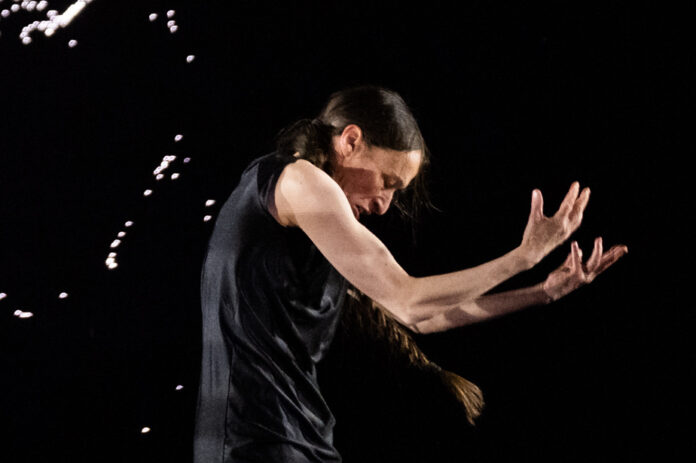The FTA always offers free outdoor programming, which often gives rise to great encounters between a colorful audience and the artists. This is the case with the very beautiful piece Creation Destruction, by Dana Gingras.
Inaugurated last year, the superb Esplanade Tranquille adds panache to the Quartier des Spectacles. It was lovely to see the square packed on Thursday – from the temporary bleachers to the sides of the stage, to the audience gathered on the terrace of the building which hosts various common areas. As dusk was advancing over the city, and the night was strewn with stars, in the air clouded by the unfortunate fire of the Chapelle du Bon-Pasteur, there was a little scent of the end of the world mixed with the beauty of the landscape.
A table perfectly set for this creation whose premise is the creative as well as the destructive power of human beings, underpinned by the climate crisis which is not evoked in a frontal way, but whose shadow hovers.
She is also used to her choreographic creations in a fairly bare and minimalist style of collaborating with creators from other disciplines to raise them to other skies, which she does here brilliantly and which is the strength of Creation. Destruction.
Once again (this was the case with the brilliant piece Monumental), she called on four musicians from the legendary Montreal group Godspeed You! Black Emperor to compose the soundtrack that accompanies this piece, the creation of which was strongly influenced by the pandemic and physical distancing. On stage, their powerful bass music, of a disturbing, almost apocalyptic beauty, was enhanced by four string musicians and four singers. In the center of the backstage, one could admire the video installation of the London collective United Visual Artists, with which the choreographer collaborates for the second time, whose pixels dance endlessly, matter in constant transformation forming atoms, planets, nights studded with stars, scrambled screens, faces with multiple changing shapes. Absolutely stunning.
The piece is presented in the form of a crescendo – like the music of Godspeed – in three beats. The spiral movement is omnipresent there. On stage, the 11 dancers evolve; free atoms, they attract and repel each other, orbiting around a common center.
The body language is spare, slow, ethereal. We dive into it in contemplative and meditative mode, while the dancers, dressed in fluorescent colored tracksuits, light up under the blacklights. Visually, it’s magnificent, even if sometimes the interpretation seemed less inhabited, uneven, a little tense at the start of the course.
The movement follows the crescendo of the music, gaining in amplitude, while the dancers, more lax and supple, in their clothes now in monochrome hues, soar into the night, rise, arch their backs. In unison, then staggered, they meet again, start over, retrace their steps, retrace their steps. After the dramatic rise which ends in a sudden fall to the ground, the third movement is rebuilt, in the rubble. Together, they see the destruction of the world, but also the power of the collective and the creative act to, perhaps, manage to reinvent it.















